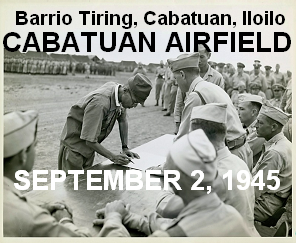
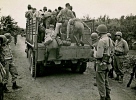
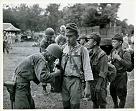
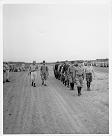
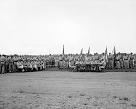
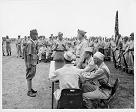
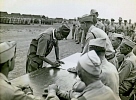
Col. Ryoichi Tozuka signs the surrender instrument
as Col. Raymond G. Stanton looks on.
Cabatuan Airfield
Barrio Tiring, Cabatuan, Iloilo
Panay Island, Philippines, September 2, 1945
|
|
- o -
|
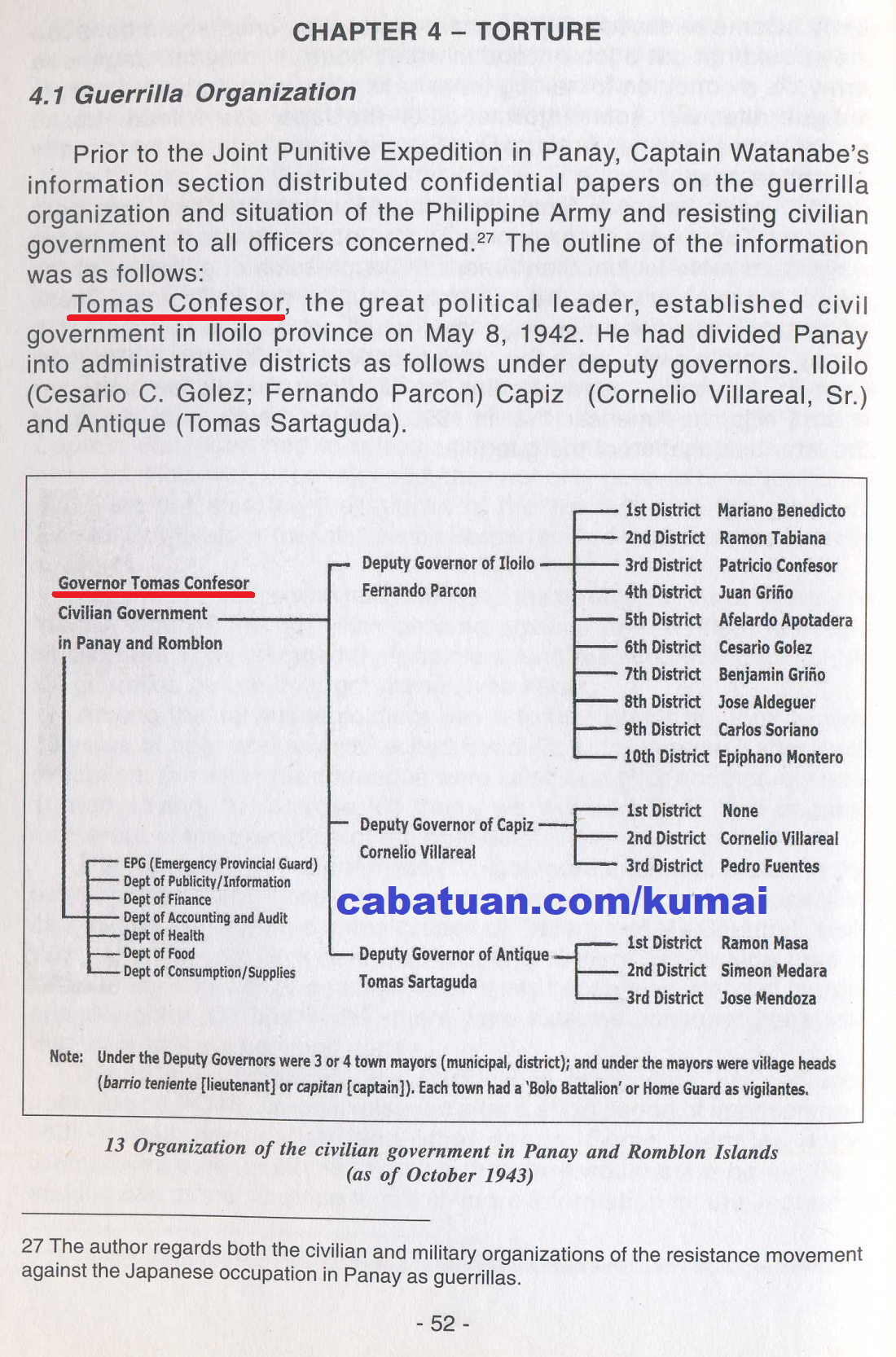
Organization of the Civilian Government in Panay and Romblon Islands (as of October 1943). Page 52.
EPG (Emergency Provincial Guard)
Dept of Publicity/Information
Dept of Finance
Dept of Accounting and Audit
Dept of Health
Dept of Food
Dept of Consumption/Supplies
|
|
CHAPTER 4 – TORTURE
4.1 Guerrilla Organization
Prior to the Joint Punitive Expedition in Panay, Captain Watanabe’s information section distributed confidential papers on the guerrilla organization and situation of the Philippine Army and resisting civilian government to all officers concerned. The outline of the information was as follows:
Tomas Confesor, the great political leader, established civil government in Iloilo province on May 8, 1942. He had divided Panay into administrative districts as follows under deputy governors. Iloilo (Cesario C. Golez, Fernando Parcon) Capiz (Cornelio Villareal Sr.) and Antique (Tomas Sartaguda).
Governor Tomas Confesor, Civilian Government in Panay and Romblon
Deputy Governor of Iloilo Fernando Parcon
1st District Mariano Benedicto
2nd District Ramon Tabiana
3rd District Patricio Confesor
4th District Juan Griño
5th District Afelardo Apotadera
6th District Cesario Golez
7th District Benjamin Griño
8th District Jose Aldeguer
9th District Carlos Soriano
10th District Epiphano Montero
Deputy Governor of Capiz Cornelio Villareal
1st District None
2nd District Cornelio Villareal
3rd District Pedro Fuentes
Deputy Governor of Antique Tomas Sartaguda
1st District Ramon Masa
2nd District Simeon Medara
3rd District Jose Mendoza
Note: Under the Deputy Governors were 3 or 4 town mayors (municipal, district); and under the mayors were village heads (barrio teniente [lieutenant] or capitan [captain]). Each town had a 'Bolo Battalion' or Home Guard as vigilantes.
|
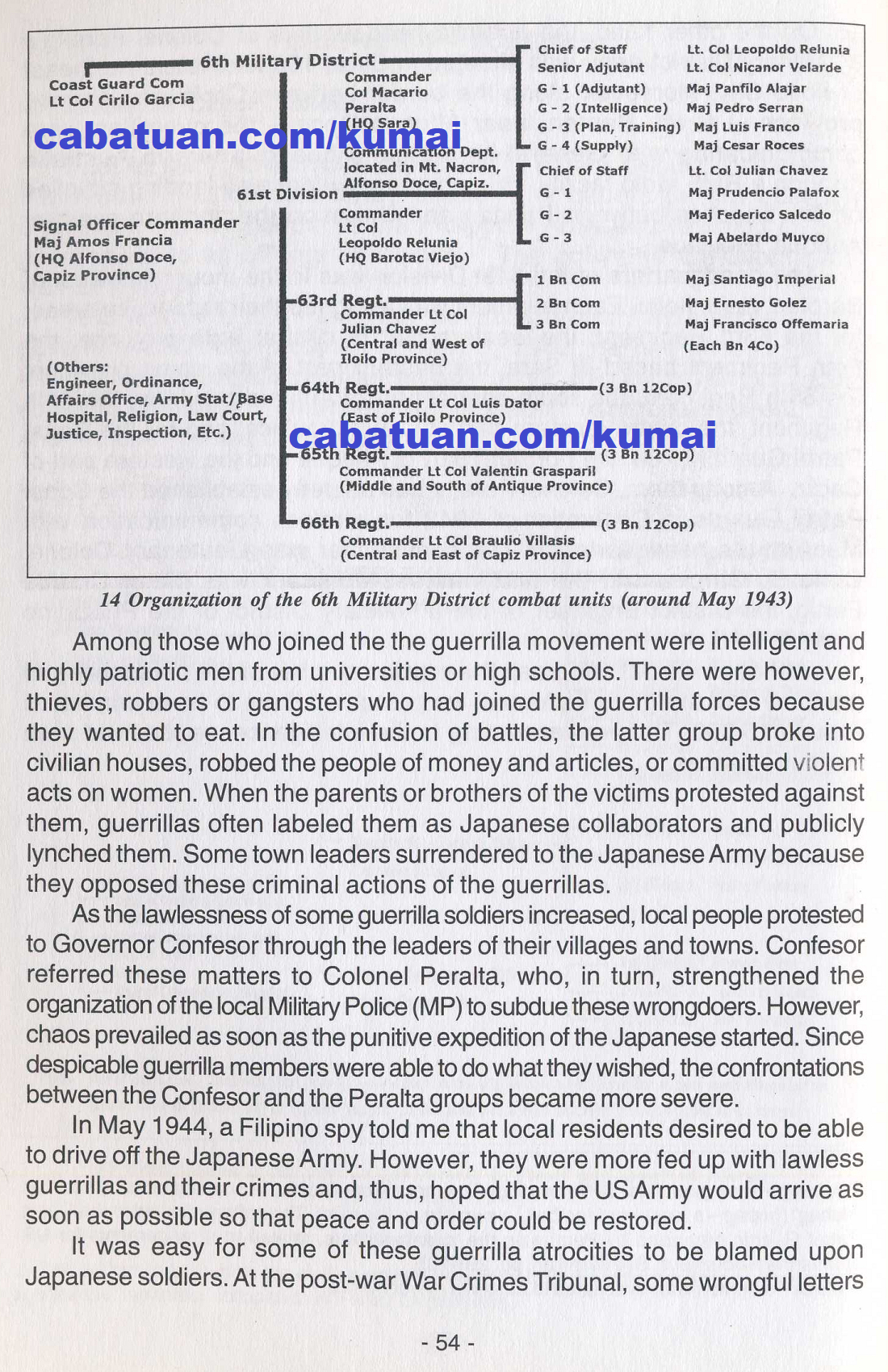
Organization of the 6th Military District combat units (around May 1943). Page 54.
Coast Guard Com Lt Col Cirilo Garcia
Signal Officer Commander Maj Amos Francia
(HQ Alfonso Doce Capiz Province)
(Others: Engineer, Ordinance,
Affairs Office, Army Stat/ Base
Hospital, Religion, Law Court,
Justice, Inspection, Etc.)
|
|
On the other hand, the guerrilla headquarters of Colonel Peralta’s 6th Military District army was situated in Sara, 100 kilometers northeast of Iloilo City. Moreover, along the border between Capiz and Antique province – at Mt. Nacron, near Alfonso Doce – the guerrillas were communicating with General MacArthur’s headquarters in Australia through a RM5 radio facility. US submarines were also landing supplies on the beaches between Pandan and Culasi on the northern coast of Antique Province.
The headquarters of the 61st Division was in the mountains west of Barotac Viejo, Iloilo. Each regiment was assigned their respective areas: for the 63rd Regiment: the western part of central Iloilo province; the 64th Regiment based in Sara, the eastern part of the same province; the 65th Regiment, the south-central part of Antique province; the 66th Regiment, the central-eastern part of Capiz province; and for the Coast Patrol Guard (CPG), the northern part of Antique and the western part of Capiz.
Among them, Colonel Peralta had secretly established the Coast Patrol Guards in December of 1942 for wireless communication with MacArthur’s headquarters. The commander was Lieutenant Colonel Cirilo B. Garcia, and the first wireless engineer was Major Claude Fertig, the District Engineer of the 6th Military District of the Philippine Army.
6th Military District
Commander Col Macario Peralta (HQ Sara)
Chief of Staff Lt. Col Leopoldo Relunia
Senior Adjutant Lt. Col Nicanor Velarde
G - 1 (Adjutant) Maj Panfilo Alajar
G - 2 (Intelligence) Maj Pedro Serran
G - 3 (Plan, Training) Maj Luis Franco
G - 4 (Supply) Maj Cesar Roces
61st Division
Communication Dept. located in Mt. Nacron, Alfonso Doce, Capiz
Commander Lt Col Leopoldo Relunia (HQ Barotac Viejo)
Chief of Staff Lt. Col Julian Chavez
G - 1 Maj Prudencio Palafox
G - 2 Maj Federico Salcedo
G - 3 Maj Abelardo Muyco
63rd Regt.
Commander Lt Col Julian Chavez (Central and West of Iloilo Province)
1 Bn Com Maj Santiago Imperial
2 Bn Com Maj Ernesto Golez
3 Bn Com Maj Francisco Offemaria
(Each Bn 4Co)
64th Regt. --- (3 Bn 12Cop)
Commander Lt Col Luis Dator
(East of Iloilo Province)
65th Regt. --- (3 Bn 12Cop)
Commander Lt Col Valentin Grasparil
(Middle and South of Antique Province)
66th Regt. --- (3 Bn 12Cop)
Commander Lt Col Braulio Villasis
(Central and East of Capiz Province)
Although we did not grasp the precise number of the personnel and equipment of the guerrilla forces, we presumed them to have numbered around 15,000. This was according to the intelligence we received from various sources.
Among those who joined the guerrilla movement were intelligent and highly patriotic men from universities or high schools. There were, however, thieves, robbers or gangsters who had joined the guerrilla forces because they wanted to eat. In the confusion of battles, the latter group broke into civilian houses, robbed the people of money and articles, or committed violent acts on women. When the parents or brothers of the victims protested against them, guerrillas often labeled them as Japanese collaborators and publicly lynched them. Some town leaders surrendered to the Japanese Army because they opposed these criminal actions of the guerrillas.
As the lawlessness of some guerrilla soldiers increased, local people protested to Governor Confesor through the leaders of their villages and towns. Confesor referred these matters to Colonel Peralta, who, in turn, strengthened the organization of the local Military Police (MP) to subdue these wrongdoers. However, chaos prevailed as soon as the punitive expedition of the Japanese started. Since despicable guerrilla members were able to do what they wished, the confrontations between the Confesor and the Peralta groups became more severe.
In May 1944, a Filipino spy told me that local residents desired to be able to drive off the Japanese Army. However, they were more fed up with lawless guerrillas and their crimes and, thus, hoped that the US Army would arrive as soon as possible so that peace and order could be restored.
It was easy for some of these guerrilla atrocities to be blamed upon Japanese soldiers. At the post-war War Crimes Tribunal, some wrongful letters of complaints and witnesses against Japanese soldiers submitted by the Philippine Army were rejected by the court.
|
|